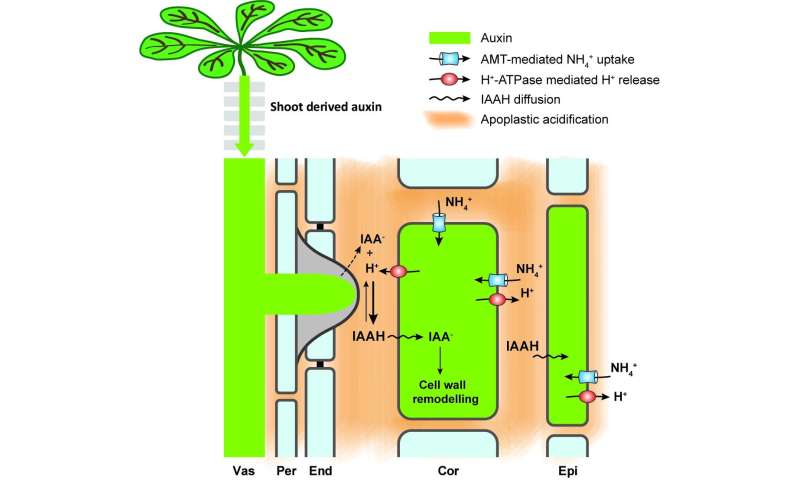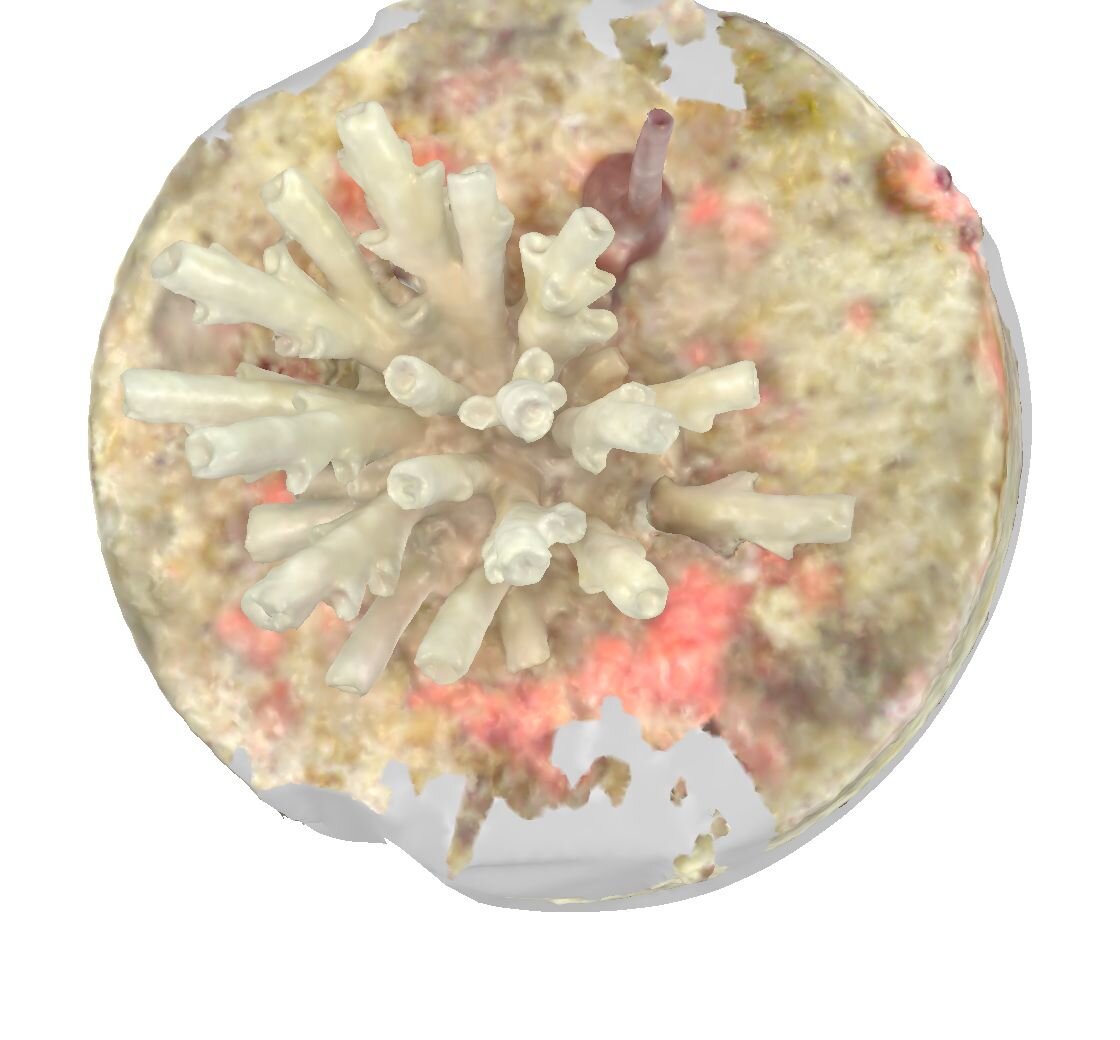#Ammonium triggers formation of lateral roots
“#Ammonium triggers formation of lateral roots”

Despite the importance of changes in root architecture to exploit local nutrient patches, mechanisms integrating external nutrient signals into the root developmental program remain poorly understood. “Here, we show for the first time that local ammonium supply stimulates the accumulation of auxin in the root vasculature and promotes auxin diffusion and lateral root formation to build a highly branched root system,” says Prof. Nicolaus von Wirén from the Leibniz Institute of Plant Genetics and Crop Plant Research (IPK).
Since every process in lateral root development, including initiation, emergence and elongation is governed by auxin, the question arises of how auxin responds to the local presence of ammonium which is a major nitrogen source in natural and agricultural soils. “Our work shows that ammonium uptake by roots provokes pH changes that bring the plant hormone auxin into a protonated form allowing auxin to diffuse into outer root cells where it triggers the emergence of lateral roots,” says Prof. von Wirén. These research results have now been published in the scientific journal Nature Plants.
Monitoring pH and auxin reporters indicate that ammonium uptake acidifies the root apoplast, i.e. the cell wall space, which increases import of protonated auxin into cortical and epidermal cells overlaying lateral root primordia, and subsequently promotes their emergence from the parental root. Although nitrogen-deficient plants also accumulate auxin in the root vasculature, like ammonium-supplied roots do, they have a more alkaline apoplast around the vasculature, which retains auxin in these tissues and prevents lateral root emergence. In simple terms, local exposure of roots to ammonium causes roots to lose control over the transport of this growth-promoting hormone.
Auxin import into cortical and epidermal cells enhances expression of genes involved in cell wall loosening, decreasing the mechanical resistance required for lateral root emergence. “Our study reveals that pH-dependent auxin diffusion can be recruited as a regulatory mechanism to coordinate the plasticity of root system architecture with fluctuating nutrient availabilities,” says Prof. von Wirén. “To what extent this enhanced lateral root density promotes acquisition also of other nutrients remains to be shown.”
In soils, ammonium-triggered lateral root emergence is not only relevant for shaping root system architecture under patchy nitrogen availability in natural environments, e.g. when roots touch organic matter-rich soil releasing ammonium through mineralisation, but also in agricultural plant production. “The increasing demand to reduce nitrogen fertilizer input is progressively met by banding sparingly soluble ammonium phosphate-based fertilizer strips in the soil,” says Prof. von Wirén. Such local ammonium depots have been shown to enhance lateral root formation of field-grown crops as well as the mobilization and uptake of co-supplied phosphate. “Since local phosphate typically stimulates lateral root elongation while ammonium triggers lateral root emergence, it is tempting to speculate that knowledge on nutrient-dependent lateral root development can be further exploited to optimize the adaptation of crop root architecture to agricultural nutrient management practices.”
More information:
Markus Meier et al. Auxin-mediated root branching is determined by the form of available nitrogen, Nature Plants (2020). DOI: 10.1038/s41477-020-00756-2
Provided by
Leibniz Institute of Plant Genetics and Crop Plant Research
Ammonium triggers formation of lateral roots (2020, September 11)
retrieved 11 September 2020
from https://phys.org/news/2020-09-ammonium-triggers-formation-lateral-roots.html
This document is subject to copyright. Apart from any fair dealing for the purpose of private study or research, no
part may be reproduced without the written permission. The content is provided for information purposes only.
If you want to read more Like this articles, you can visit our Science category.
if you want to watch Movies or Tv Shows go to Dizi.BuradaBiliyorum.Com for forums sites go to Forum.BuradaBiliyorum.Com




